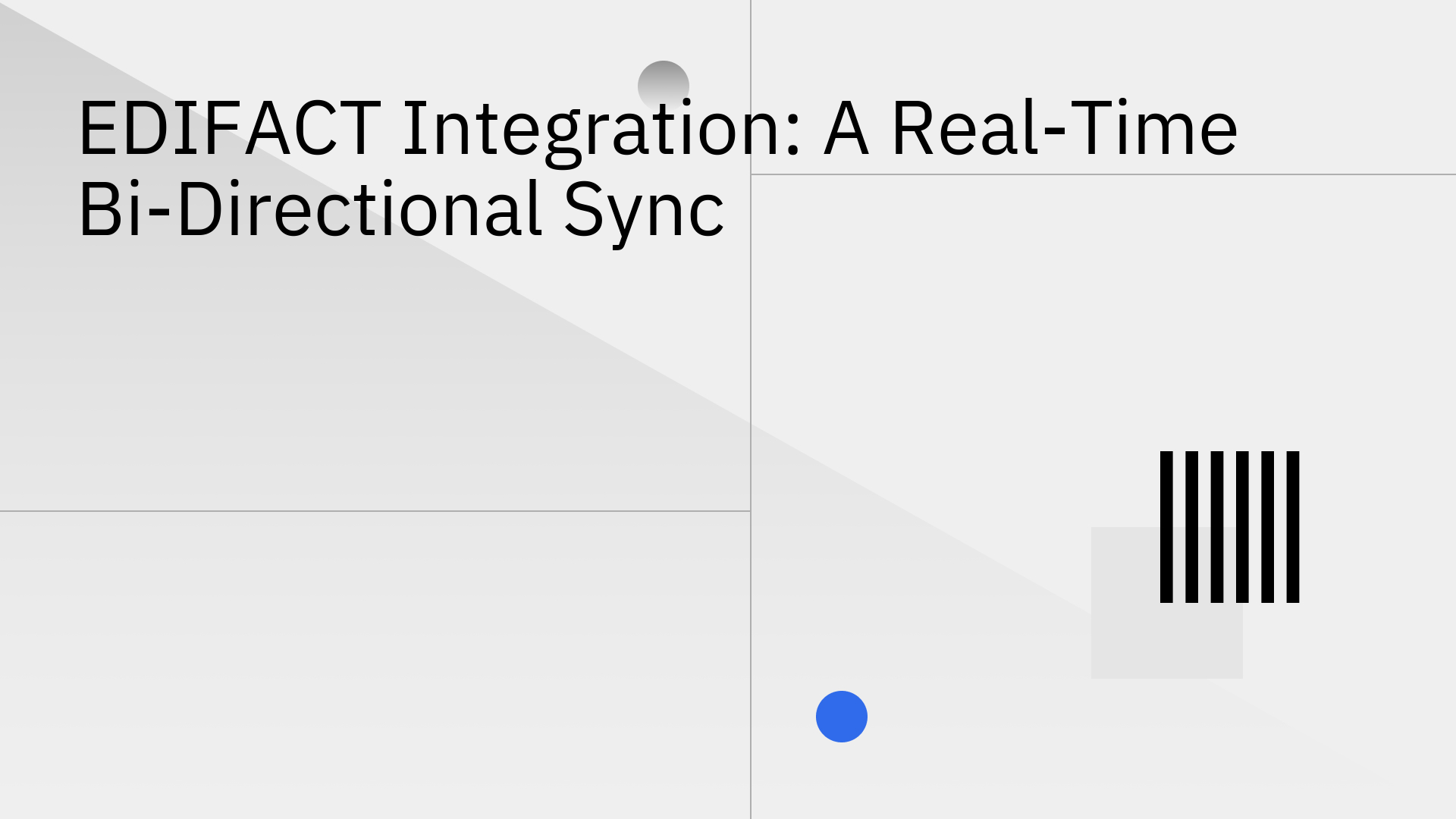
Electronic Data Interchange (EDI) is the backbone of modern commerce, allowing businesses to exchange documents like purchase orders and invoices electronically.
A crucial international standard for this communication is EDIFACT. However, many companies still rely on traditional EDI systems that cause significant problems.
These outdated methods often involve processing data in batches, leading to delays, requiring manual data entry, and depending on complex custom integrations that are difficult to maintain.
The solution to these challenges is a modern approach: real-time, bi-directional synchronization, which ensures data flows instantly and accurately between all your business systems.
Before diving into integration solutions, it's helpful to understand what EDIFACT is and how it works. This standard provides a common language for businesses around the world to communicate electronically.
UN/EDIFACT stands for United Nations/Electronic Data Interchange for Administration, Commerce, and Transport. It is an international set of rules developed by the United Nations to streamline the exchange of electronic business documents [2].
While it is used globally, it is most widely adopted across Europe and has a significant presence in the Asia-Pacific (ASPAC) region [3].
An EDIFACT file isn't just a simple text file; it's governed by a strict and structured schema to ensure computers can read it without errors. Each message represents a single business document, like an invoice or shipping notice, and is built on a few key principles [1]:
Many businesses running on traditional EDI systems don't realize how much these outdated processes are costing them. The problems go far beyond simple inconvenience; they directly impact revenue and customer satisfaction.
Traditional EDI integration often relies on batch processing—gathering data over a period (like hours or even a full day) and sending it all at once.
This method creates significant delays between when something happens in your business and when your systems reflect it. These delays, or latency, have hidden costs that can cripple an operation [4]:
Beyond batch processing, many companies use custom-coded, point-to-point integrations to connect their EDI systems. These connections are often brittle, meaning they break easily when one system is updated.
They require specialized knowledge to build and maintain, and they simply don't scale. As your business grows, adding new trading partners or connecting new systems becomes a slow, expensive, and frustrating process.
The answer to the limitations of legacy EDI is a modern architecture built on real-time, bi-directional synchronization. This approach transforms EDI from a slow, periodic task into a dynamic, instant flow of information.
Bi-directional sync is a process where data flows automatically in both directions between two or more connected systems. This creates a single, unified source of truth across your entire organization.
When a record is updated in one system—for example, an order status changes in your ERP—that update is instantly and automatically reflected in all other connected systems, like your EDI platform, CRM, and warehouse management system (WMS).
This ensures that every team is working with the most current data, all the time. To learn more about this powerful concept, explore our guide on bi-directional sync software for business.
Moving from batch-based EDI to a real-time model offers significant advantages that strengthen your entire supply chain:
To achieve true real-time EDI, you need a platform built for speed, reliability, and simplicity. This is where Stacksync provides a purpose-built solution.
Stacksync is a no-code, real-time platform designed to connect your EDI workflows directly to your core business systems like ERPs and databases.
We help you modernize your EDI processes by eliminating the batch delays, manual work, and complex custom code associated with legacy systems. Instead of building and maintaining brittle integrations, you can configure powerful, reliable data flows in minutes.
A visual representation would show Stacksync at the center, with bi-directional arrows connecting it to EDI, ERP, WMS, and CRM systems, illustrating a seamless data hub.
Stacksync provides the tools you need to build a truly modern and efficient EDI operation.
Setting up a modern, real-time EDIFACT integration doesn't have to be a massive IT project. With a platform like Stacksync, the process is simple and powerful.
The days of slow, cumbersome, batch-based EDI are over. Traditional integrations create data delays that lead to lost sales, operational inefficiencies, and unhappy customers. The future of commerce is built on real-time data, and bi-directional sync is the key to creating an agile, efficient, and competitive supply chain.
By moving your EDIFACT integrations to a modern platform, you can eliminate bottlenecks and empower your teams with the accurate, instant data they need to succeed.
Stacksync offers the leading solution for modernizing your EDI workflows with a scalable, no-code platform that delivers unparalleled speed and reliability.
Ready to move beyond outdated EDI? Learn more about our powerful data sync and workflow automation platform.